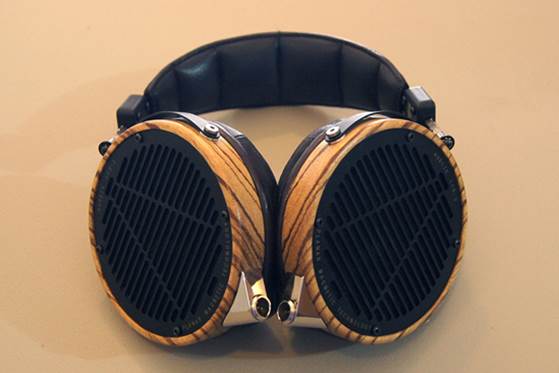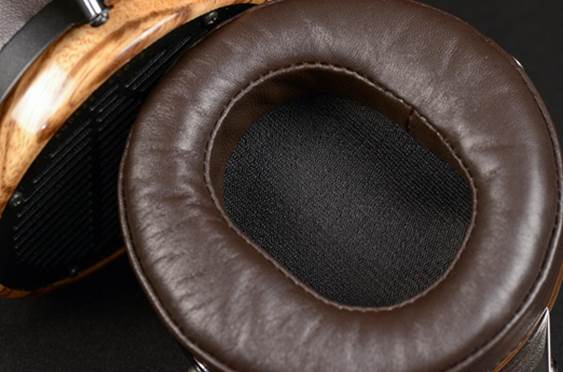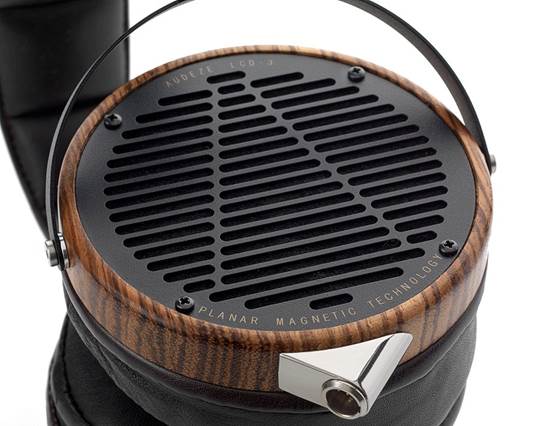Over-ear headphones
Can any headphones be worth $2836.4? It’s a question we
found ourselves asking more than once when reviewing Audeze’s (pronounced
Odyssey) LCD-3. By the end of the test period we had our answer, and it’s
firmly in the positive.
Provided the source and amplifier are up to the job these
‘phones deliver a scale and authority of sound we didn’t think headphones could
ever manage.

Audeze LCD-3
The first hint of greatness is apparent straight from the
off. We start with Beethoven’s lovely Moonlight Sonata, and get treated to a
rich, vibrant sound that lacks for nothing in resolution or dynamic subtlety.
We’re taken by the amount of insight on offer, from the LCD-3’s convincing
rendering of the layered harmonics of a piano to their ability to convey the
low-level details that define the size and acoustic of the hall the piece was
recorded in.
We’re also struck by the solidity of the presentation.
There’s a real feeling of physical presence to the sound, a quality that eludes
even the best of rivals such as the similarly priced Grado PS1000.
Pace and depth
Move onto Before Your Very Eyes from Atoms For Peace and the
LCD-3s are happy to move up the gears. Here they charge along, keeping a firm
grip on the intricate rhythms and delivering a full dose of the music’s
momentum. It’s also here we notice the Audeze’s terrific low-frequency
performance – seriously weighty yet finely articulated.
Balance is the key to most top-class products, and the
LCD-3s deliver plenty of attack without sacrificing refinement.

Audeze LCD-3
This level of performance requires a top-quality source and
headphone amplifier. We used our Naim NDS/555PS streamer with our MacBook as
back-up, plus Naim’s DAC-V1 and Meridian’s Prime headphone amp. The Audezes are
right at home with such electronics, but such is their resolution we’re sure
the benefits of even more ambitious headphone amplifiers would be clear.
Take the earpieces apart (if you’re brave) and you’ll find
planar magnetic drive units. A conventional drive unit consists of three main
parts – a diaphragm, voice coil and motor assembly (which includes the magnet).
In the Audeze, the voice coil is printed on a flat
diaphragm, so reducing mass and complexity. This diaphragm sits between an
array of magnets and so is driven across its entire surface as the music signal
flows through the voice coil. This reduces distortion and improves resolution
compared with conventional driver technology.
As expected, the LCD-3s’ build quality is lovely. They have
a retro feel, but there’s no denying the quality of the materials used. The ear
cups use nicely crafted Zebrano wood while the ear-pads are covered with
beautifully soft lambskin. It’s a world away from the plastic-and-more-plastic
approach of many cheaper headphones.

Audeze LCD-3
Sizeable but comfortable
These are large headphones – the ear-cups are 11cm in
diameter – and fairly weighty at 548g, but they are slightly angled to sit
comfortably on the head. We found this worked well, though our ears did warm up
as a session went on.
The LCD-3s are an open-backed design, so leak sound. A lot.
Not great if someone else is watching TV in the same room.
These things apart, there’s little to complain about here.
While the price may be a stumbling block, it would take tens of thousands of
pounds to buy a pair of speakers that can even approach the LCD-3s’ level of
sound quality. Looked at in that way these Audezes almost seem like good value.
Almost.
|
Specifications
- Type:
Over – ear/open
- Outputs:
6.3mm
- Wireless:
No
- Weight:
548g
- Cable length: 2.5m
|